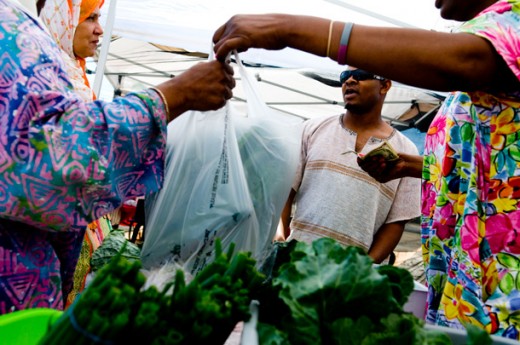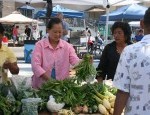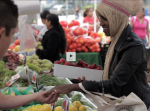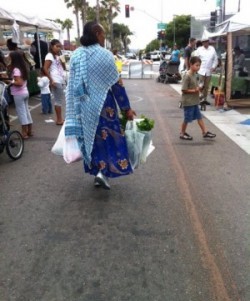|
|
Lillian Tunda came from the Congo in 2000 as a refugee with her husband and four kids. As part of their resettlement process, they were given food stamps, and placed in a low-income apartment complex in the City Heights neighborhood of San Diego.
Then, in 2008, the City Heights Farmers Market opened. Tunda and her family no longer live in the neighborhood – they’re now in a planned development for low-income families located 20 miles away – but she still finds the time every Saturday to drive to the farmers’ market to get her fruits and vegetables.
“Where I live right now, I drive once a week and I drive to San Diego because of this program I call ‘double money,’” said Tunda, laughing about the moniker she’d just coined. “I can pay $20 in EBT and the market will give me $40 in produce. So you see, I have more power to buy.”
EBT, or Electronic Benefit Transfer, is another name for food stamps. What Tunda calls “double money” is what makes this market stand out: EBT value is doubled here, capped at $40 a month, thanks to a federal subsidy. This is the first market in San Diego to accept EBT and to double their value. Tunda typically gets produce she would find back home in the Congo: bananas, collard greens, cassava leaves. And they aren’t necessarily organic.
Click here to read the rest or listen to the report
Related Coverage
 |
Wanted: Farmers for This Farmers Market
The farmers market in southeast San Diego set out to replicate the success seen in City Heights. One thing is missing: the farmers.
 |
San Diego’s Urban Farms: Oases in Food Deserts
Linda Vista is following City Heights’ lead by opening a farmers market and community garden to help feed low-income residents. The refugee neighborhood lacks fresh fruits and vegetables and grocery stores.
 |
Video: Low-Income Shoppers Thrive at City Heights Farmers Market
The City Heights Farmers Market celebrated its third anniversary in June. When it started, critics said the venture wouldn’t make it in a low-income community.

